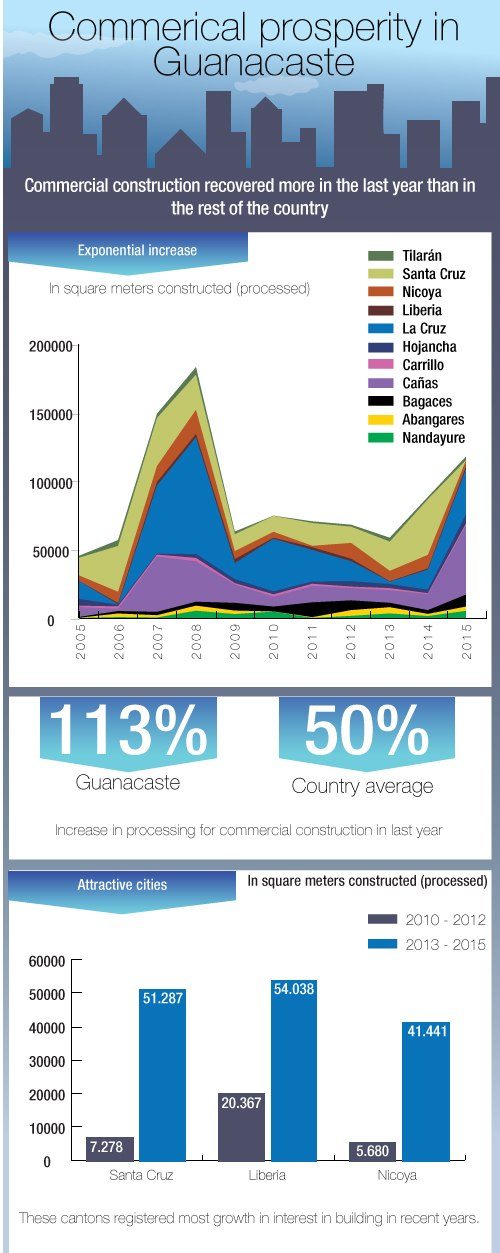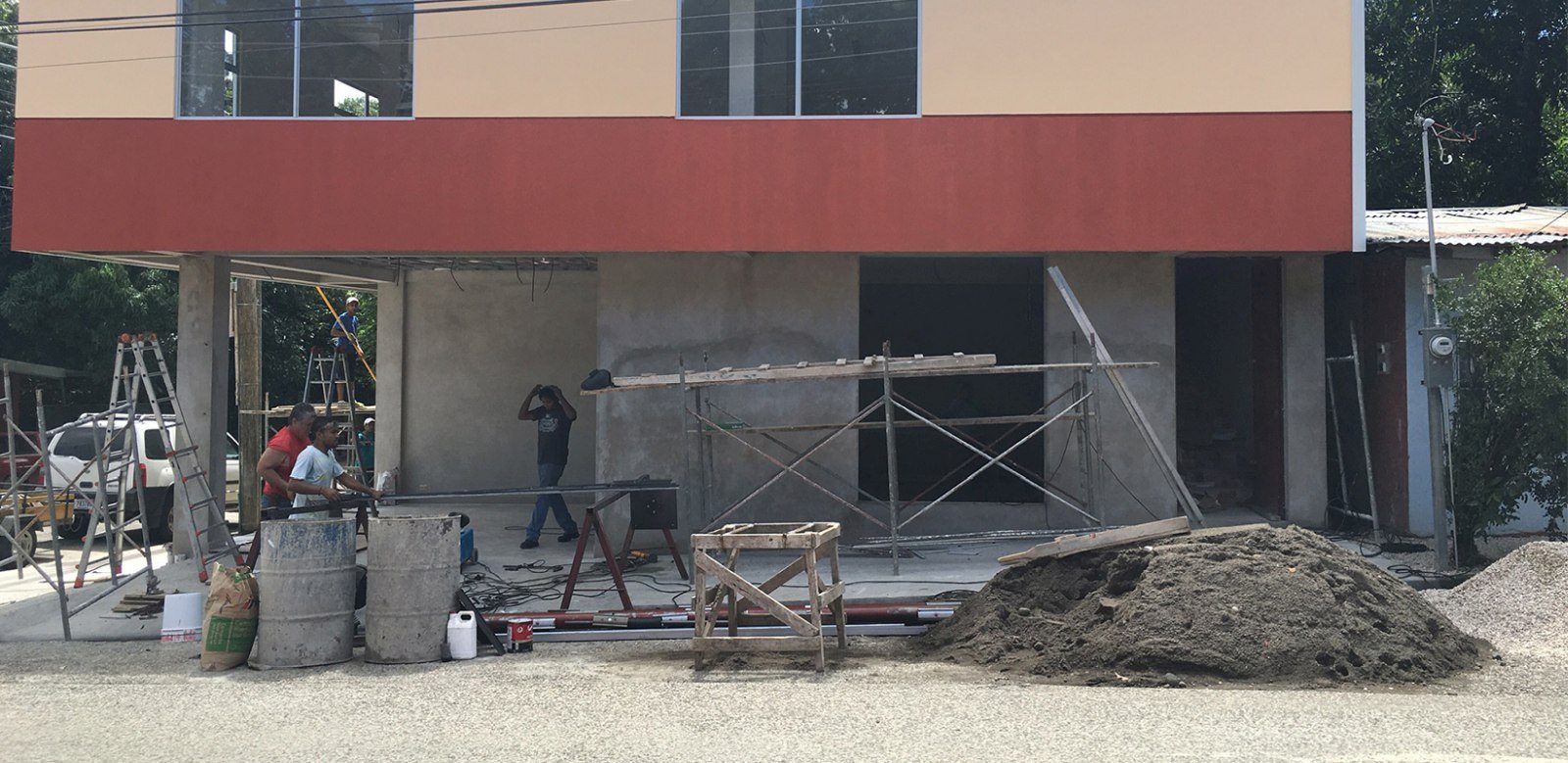
There’s no doubt that Guanacaste’s beaches are highly attractive for real estate developers. But the province’s urban centers, which have no beaches or mountains, also are starting to attract investors.
If you’re looking for a place to invest, pay attention to this trend: The central districts of Nicoya, Liberia and Santa Cruz in the past three years have shown greater intention to build commercial projects than coastal districts in the same cantons, according to information from the Association of Engineers and Architects (CFIA) analyzed by The Voice of Guanacaste.
The data include new constructions, expansions and many types of businesses, such as supermarkets, clinics, banks and restaurants. They exclude hotels, which are in a separate CFIA data category.
The most surprising case is Nicoya, with 630 percent growth from 2010-2012 and 2013-2015. The rest of Guanacaste grew on average by 52 percent during the same periods, while the country average was 20 percent.

Notice the difference: While in 2014 in Nicoya 5,462 square meters were processed – not even the size of Chorotega Stadium – enough squared meters were requested in 2015 to fill four stadiums of the same size, or about 32,109 square meters. See Infograph.
That tendency could be caused by several factors.
“Growth is happening today because people have the ability and opportunity to access capital to invest and invigorate the local economy,” Nicoya Chamber of Commerce President Johnny Gutiérrez said.
The intention to build is measured in square meters that have been processed, or the total area that developers present to the CFIA before starting construction.
In general, Guanacaste has recuperated its previous charm from before the U.S. real estate crisis in 2008-2009. (See separate story: “XXX”)
What’s Going On?
A frequent hypothesis by market analysts is that urban centers expand in part as a consequence of coastal real estate development.
Coastal hotels, condominiums and tourism centers generate productive chains with suppliers, and companies begin to locate in the closest urban centers, little by little. That’s where the most qualified labor is located.
The population expands to meet labor demand and at the same time, pressures the market for more banking, supermarket, transportation and food services, said Elena Dorado, a professor in sustainable tourism business development at the National University.
“There are relationships that continuously are strengthened and expanded, needs that develop in different markets, and (they) begin to create economic growth,” Dorado said.
That’s how it is happening in the center of Liberia. This district, which has the highest level of industrialization in the Chorotega region, has maintained a constant level of commercial construction planning for the past five years, experiencing 72 percent growth in the last year.
The central district of Santa Cruz also showed a similar trend: Large commercial and housing construction in the past 10 years in its most exploited coastal district, Tamarindo, seems to have rubbed off on the city.
At least in the past three years, the intention to build commercial properties in the central district far surpassed its more powerful neighbor Tamarindo, with more than 50,000 square meters of businesses processed by the CFIA.
And Nicoya?
Nicoya doesn’t have neighbors that have been highly exploited by large developments such as Papagayo in the case of Liberia or Tamarindo in the case of Santa Cruz.
The canton’s chamber of commerce president, Johnny Gutiérrez, believes new development is caused by a mixture of improvements in municipal processing (many processes are now online) and more resources provided by state banks for investment in ventures.
He added that the canton’s economic development is changing. Previously, business owners focused their investments in only one area, but now are betting on diversifying services.
“Our economic development has changed. We now have more variety to offer the consumer. Pedro Nansul has three different stores, and Yuri Villalobos builds rental and service sales buildings,” the councilman said, referring to local entrepreneurs.
What’s certain is that this upturn should not be overlooked, because it is an opportunity to visualize a future of commercial growth in urban centers. Is Guanacaste more than just its coasts? Commercial data indicate the answer is yes.







Comments